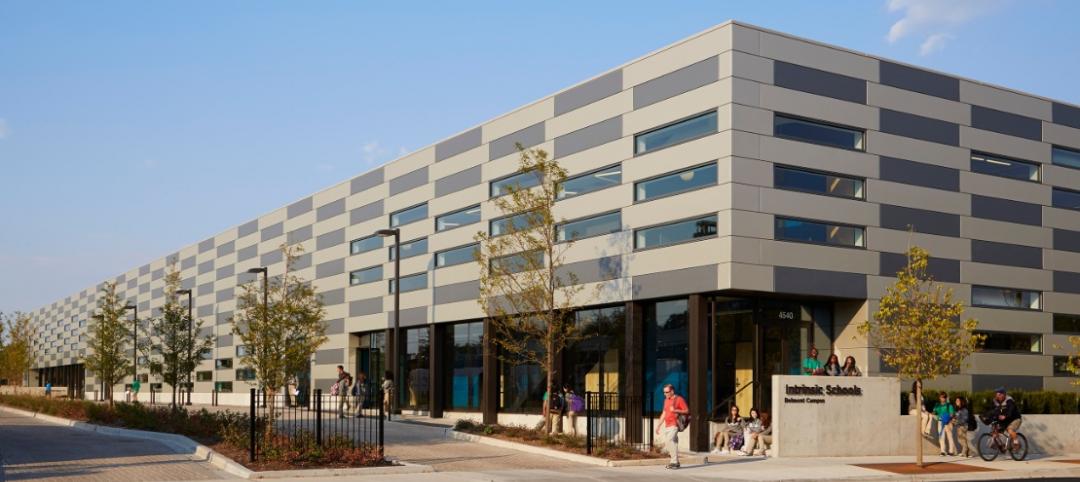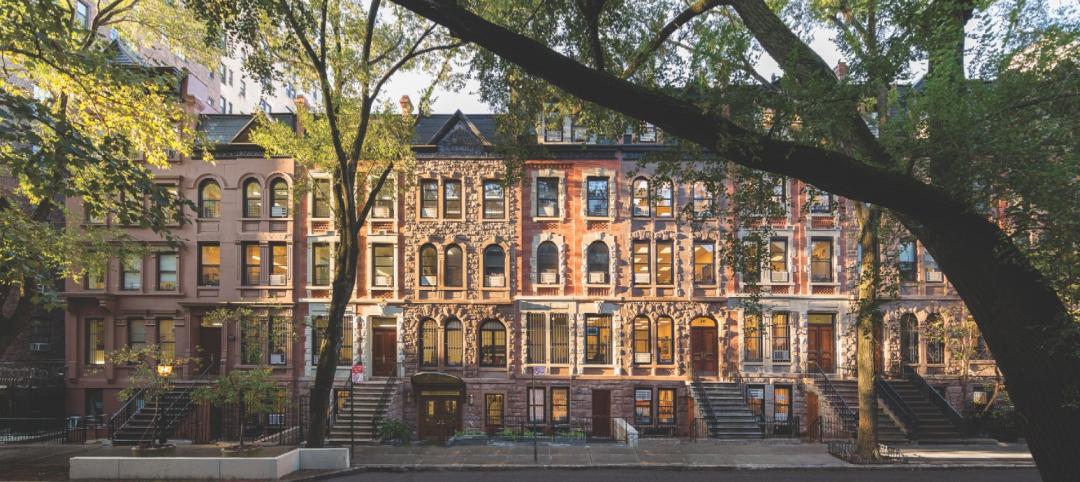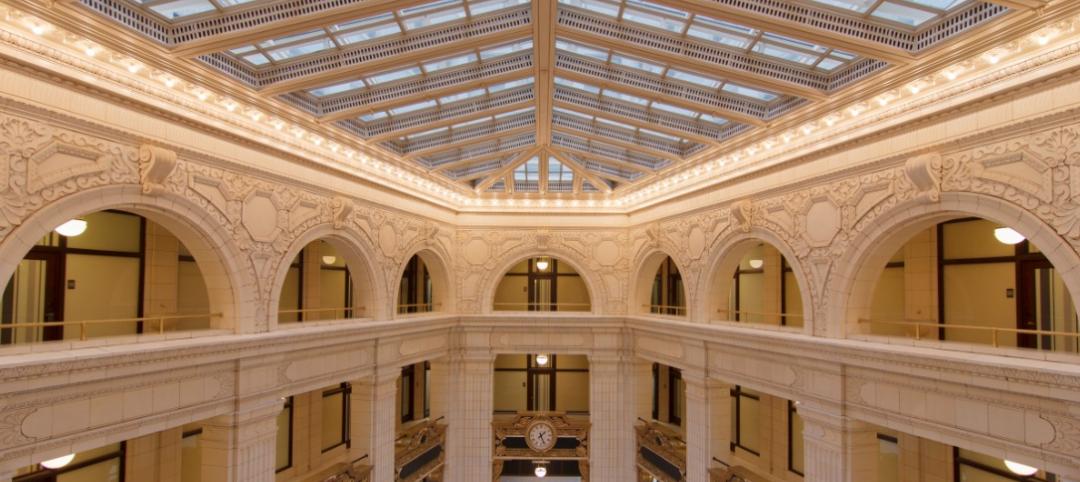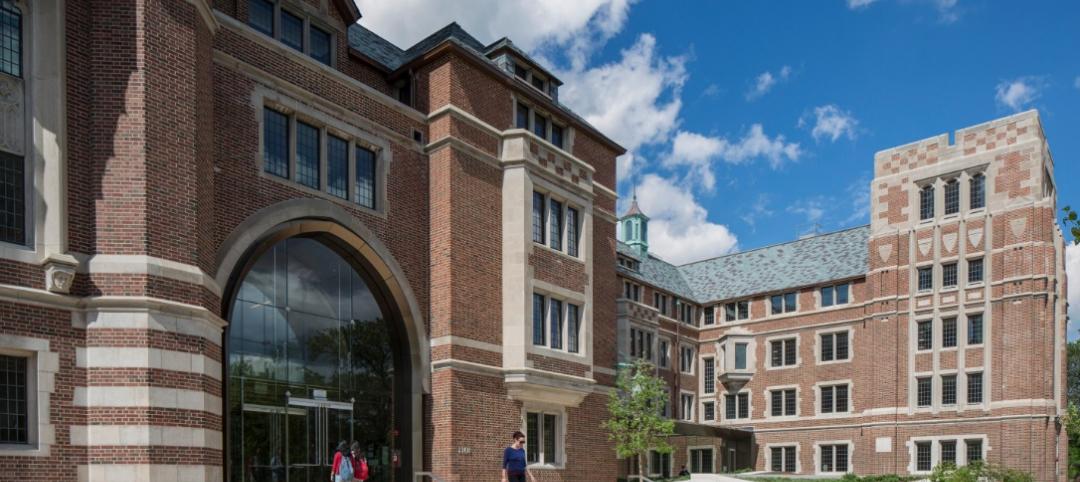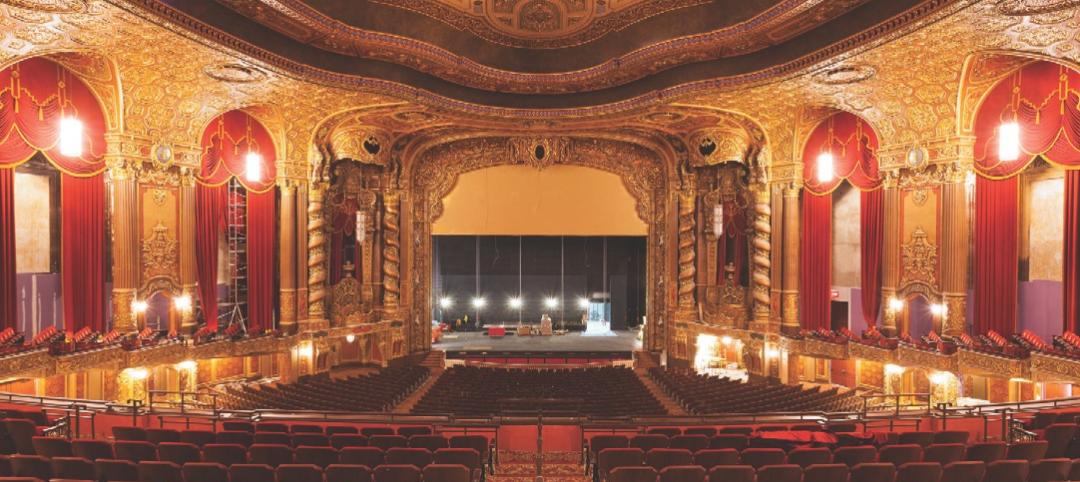The Union Trust Building, commissioned by coal magnate Henry Clay Frick and completed in 1917, originally was a 240-store shopping arcade with 700 offices on its upper floors.
This 11-story Flemish-Gothic–style building has had several owners. The latest, Pittsburgh native Jon Davis, CEO of The Davis Companies, paid $14 million in 2014 with the intention of revitalizing it into an amenities-rich commercial center.
The building was in such disrepair that much of the reconstruction budget had to go toward structural, mechanical, and electrical infrastructure improvements that included opening up deep floor plates and removing valances on windows (added long after the building first opened) to let in more daylight.
The limestone exterior was cleaned. The leaking mansard roof was repaired and restored. A new rooftop cooling system, hidden by a contemporary screen, was installed. Ten passenger elevators and two freight elevators were modernized.
Cross axes that emanate from a central rotunda split Union Trust’s cruciform-shaped design into four quadrants. The interior features a grand atrium topped by a Tiffany glass dome measuring 40 feet in diameter. The project team relit the dome to draw eyes upward. The rotunda, now with comfortable seating, serves as a greeting area for office tenants; it can also be rented for events.
More than 19,000 sf of New Zealand wool carpet was laid throughout the building, with color changes on different floors that coordinate with 30 pieces of art that were commissioned for the building.
Amenities include a new fitness center, a renovated seminar room and breakout area, a marketing center, and a concierge desk in the lobby. Parking for 190 vehicles was added in the basement and sub-basement. The National Park Service allowed for the addition of glass canopies at the exterior entries and exposed ductwork to achieve higher interior ceiling heights.
Project Summary
Gold Award Winner
Building Team: Elkus Manfredi Architects (submitting firm, design/interior architect) The Davis Companies (developer) Perfido Weiskopf Wagstaff + Goettel (executive architect) Wessling Architects (exterior restoration architect) Atlantic Engineering Services (SE) AHA Consulting Engineers (MEP) Van Duesen & Associates (elevator consultant) Heritage Consulting Group (preservation consultant) Powers & Company (historic preservation) Mascaro Construction (GC).
Details: 666,993 sf. Construction cost: Confidential. Construction time: May 2014 to November 2016. Delivery method: Design-bid-build.
See all of the 2017 Reconstruction Award winners here
Related Stories
Reconstruction Awards | Nov 16, 2015
Lumberyard turned into Chicago charter school
While the existing structures were in poor condition, the Building Team preserved and restored 75% of the spaces and incorporated historic elements in the final design of the Intrinsic School on Chicago's Northwest side.
Reconstruction Awards | Nov 12, 2015
Columbia Grammar and Preparatory School grows with the times
The 251-year-old NYC school was a design-build project that overcame issues like tight space and zoning appeals during its redevelopment.
Reconstruction Awards | Nov 10, 2015
Restoration of the Whitney Building provides hope for Detroit
Four years ago, Whitney Partners purchased the 253,000-sf Whitney for $3.3 million. Their mission was to turn the 19-story structure into a mixed-use hotel, rental apartment, and retail center that would serve as a reminder of more prosperous times in Detroit’s past.
Reconstruction Awards | Nov 9, 2015
University of Chicago uses space economically with Saieh Hall
The five-story, 100,000-sf seminary was converted into a modern education facility that would be fully integrated into the university’s Hyde Park campus. The project demonstrated the university’s commitment to finding a balance between new construction and adaptive reuse of historically significant buildings.
Reconstruction Awards | Nov 9, 2015
King of kings: Classic brooklyn movie theater stages a return engagement
The theater, which withstood vacancy, neglect and vandalism, has been redeveloped with a goal: balance preservation with the creation of a modern performance space.



